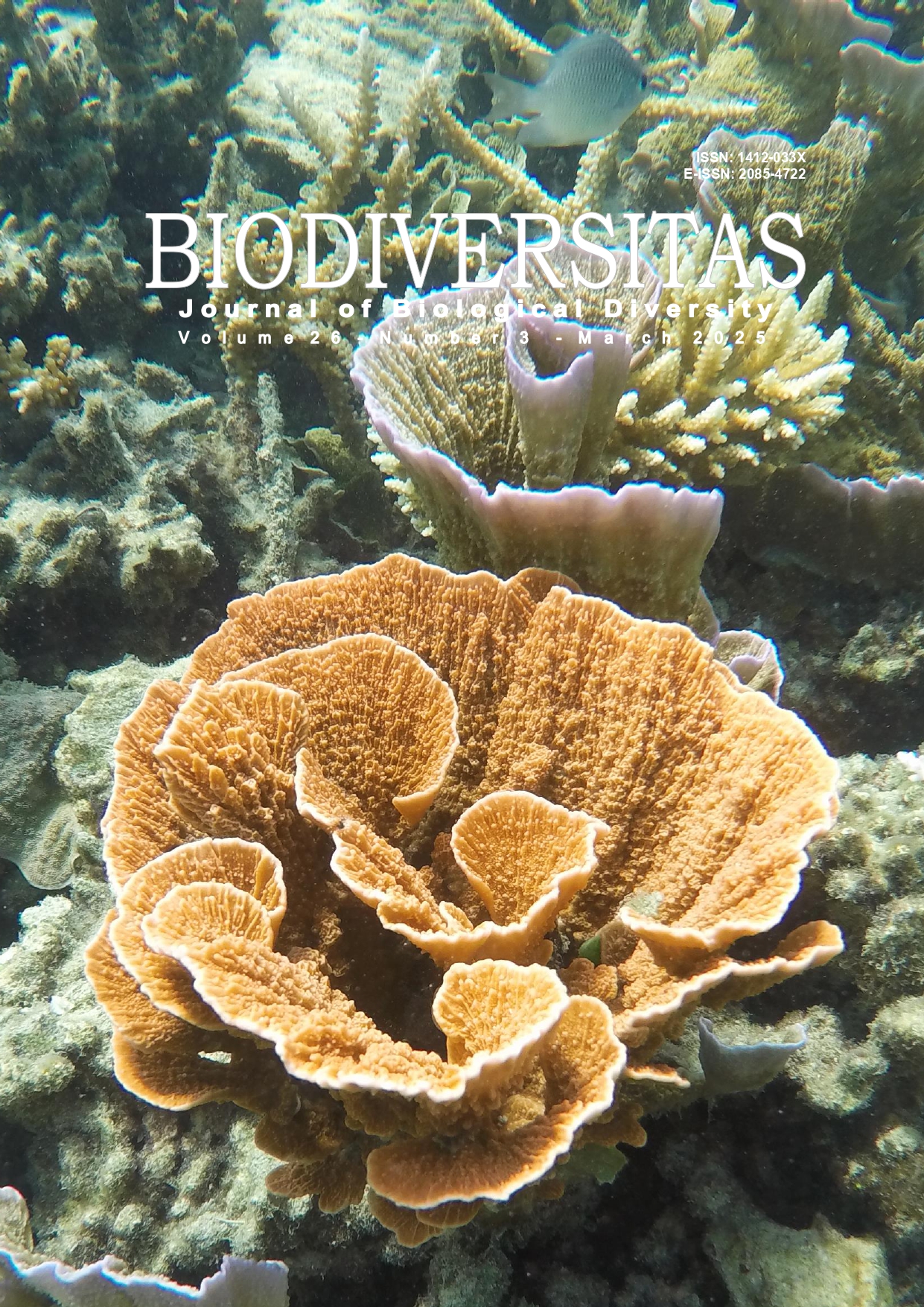Norovirus contamination in the restrooms of markets in Bangkok, Thailand
##plugins.themes.bootstrap3.article.main##
Abstract
Abstract. Rupprom K, Phumisantiphong U, Wongsuk T, Hirunwong K. 2025. Norovirus contamination in the restrooms of markets in Bangkok, Thailand. Biodiversitas 26: 1406-1413. Norovirus is among the most important causative agents of acute nonbacterial gastroenteritis. The transmission of norovirus can occur through the fecal-oral route, including person-to-person contact and contaminated food, water, and environmental surfaces. This study first investigated norovirus contamination in the restrooms of local markets in Bangkok, Thailand, using Reverse Transcription-quantitative Polymerase Chain Reaction (RT-qPCR) and subsequent semi-nested RT-PCR. An RT-qPCR tested on 211 samples found norovirus GII in 9.5%, GI in 4.3%, and a mix of GI and GII in 1.4% of samples. The urinal flush valves had a higher contamination rate for norovirus than the doorknobs (18.7% vs. 12.5%). Meanwhile, doorknobs had a greater quantity of noroviruses than urinal flush valves (1.68 × 103 ± 3.83 × 103 RNA copies vs. 6.07 × 102 ± 8.71 × 102 RNA copies). Further, the female restrooms and doorknobs were more significantly contaminated with GII than GI (p = 0.048). Using semi-nested RT-PCR, only GII was detected in 31.4% of RT-qPCR-positive samples, and GII.4 was identified as the dominant genotype. Our results revealed a high prevalence of norovirus contamination on frequently touched surfaces in non-outbreak situations. This is significantly beneficial for norovirus outbreak prevention, health risk assessment, and molecular epidemiological investigation of norovirus infection.

